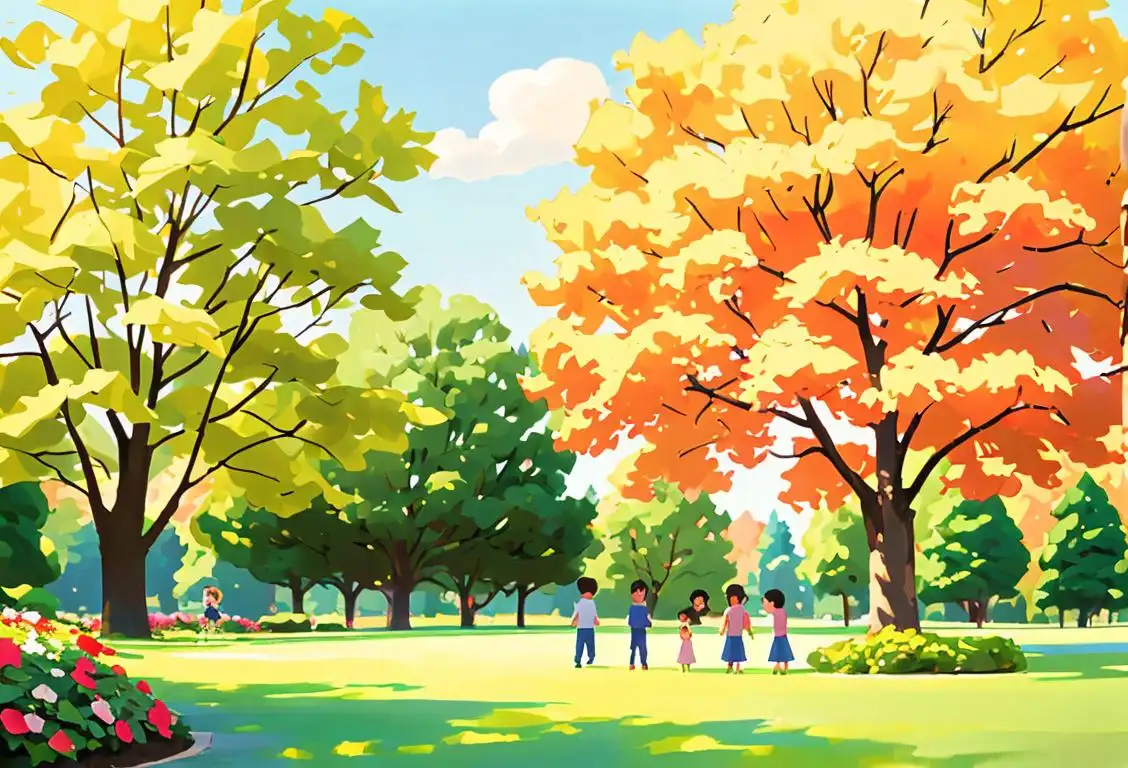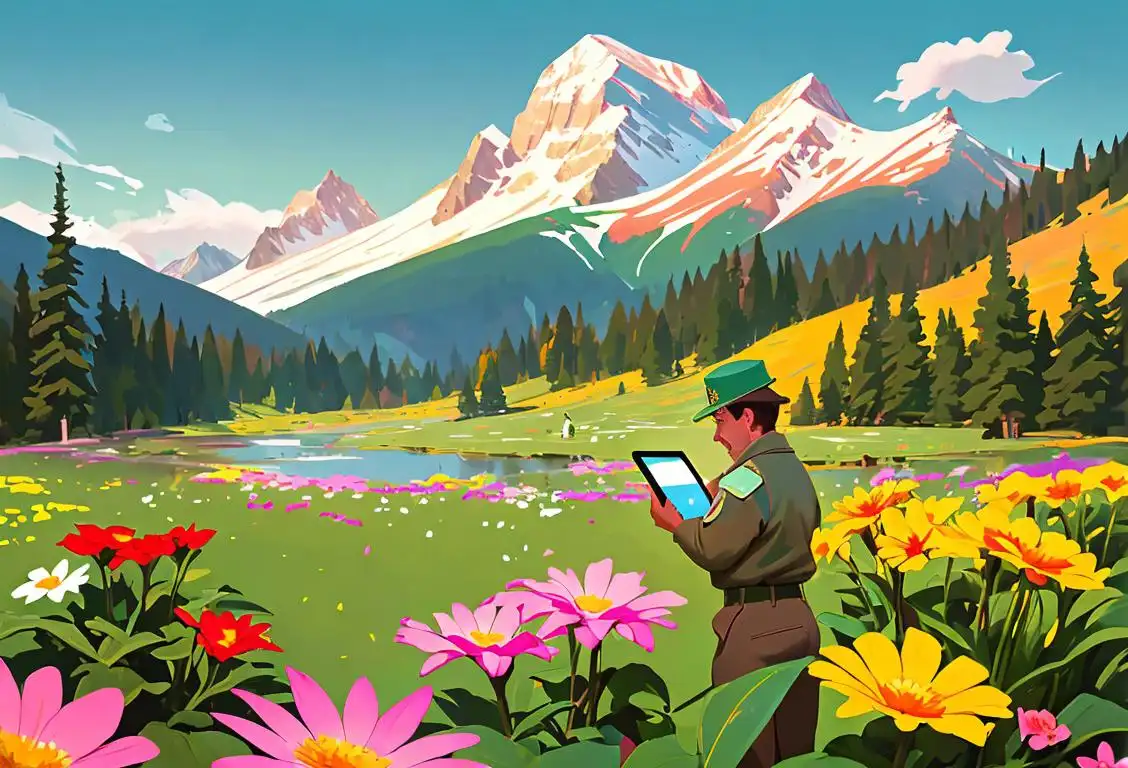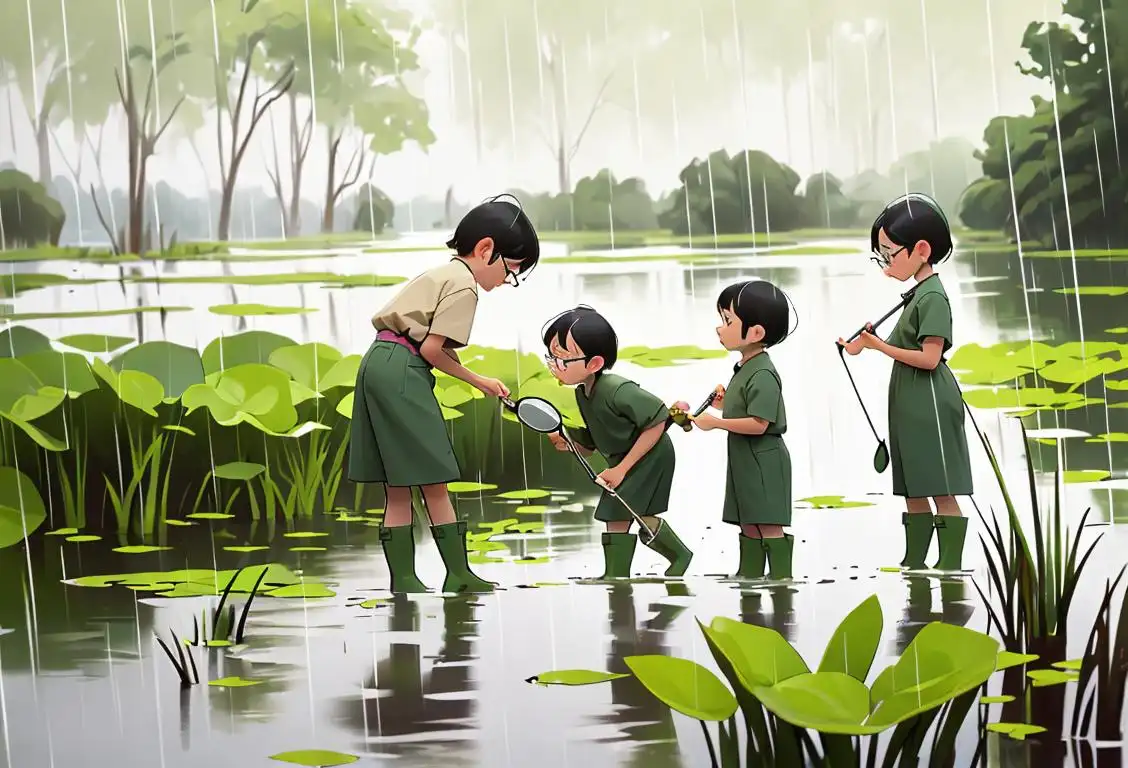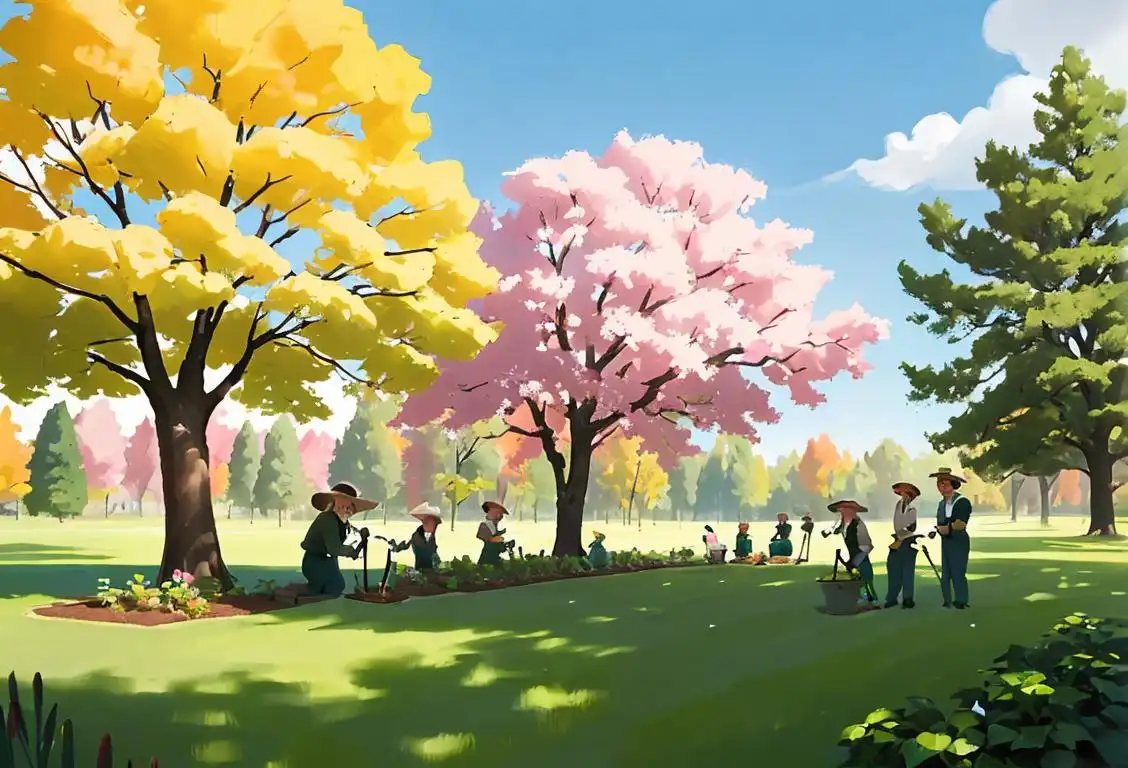National Tree Appreciation Day
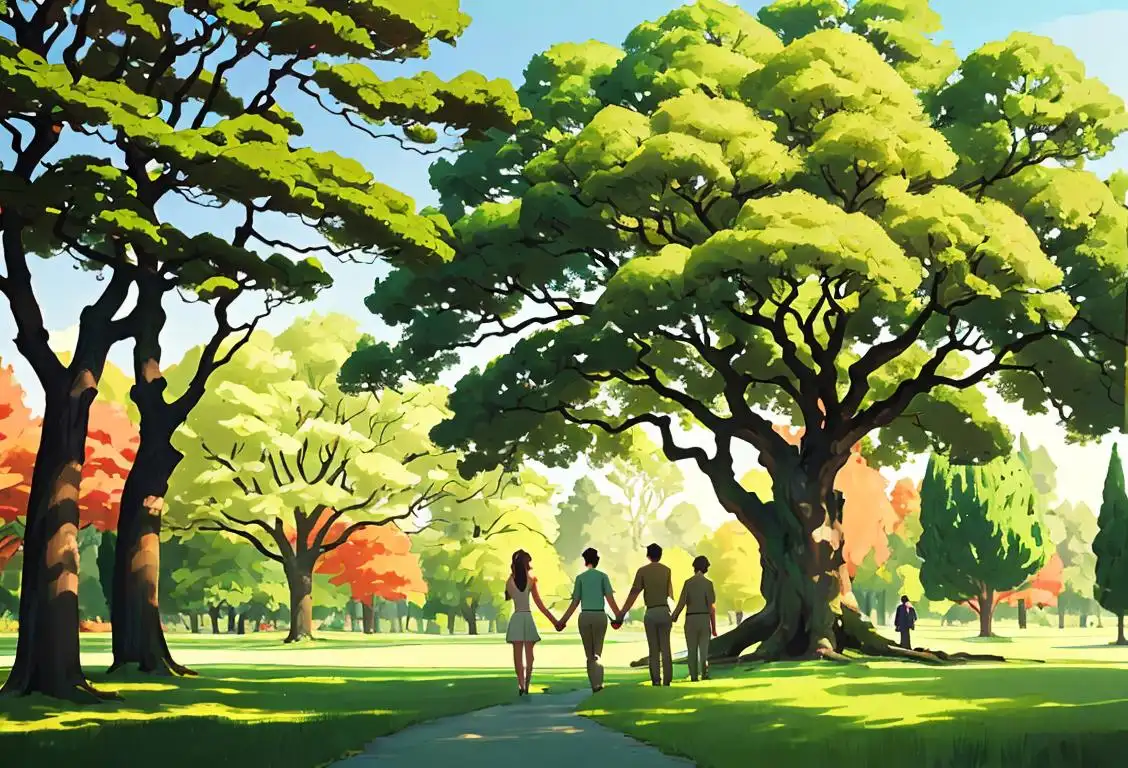
Welcome to National Tree Appreciation Day! Get ready to hug a trunk and leaf your worries behind as we dive into a day dedicated to our tall, woody friends. This is the perfect time to branch out and learn more about trees, their importance, and how to show them some love.
When is Tree Appreciation Day?
It's national tree appreciation day on the 16th November.
The Origin of National Tree Appreciation Day
Let's take a trip through the online forest to discover the roots of National Tree Appreciation Day. On November 16, 2019, this day gained a lot of attention with 170 mentions buzzing around the web. It's no surprise that people flocked to honor these magnificent plants, as trees provide us with so much more than just shade and beautiful landscapes. They produce oxygen, absorb harmful gases, and even house adorable squirrel families.But who came up with the idea of Tree Appreciation Day, you ask? Well, the internet isn't always fruitful, and the origin of this specific day remains a bit of a mystery. It seems that people have always revered trees and recognized their significance, and this day just became another way to celebrate their arboreal awesomeness. So, grab your favorite leafy companion and let's dive deeper into the world of tree appreciation!
Why We Should Appreciate Trees
Trees have been around for millions of years, silently observing the world while growing taller and stronger. They provide us with oxygen, shade on hot summer days, and a home for countless creatures. But that's not all - trees also have a way of bringing people together. Have you ever tried having a picnic under the leafy canopy of a majestic oak tree? It's a magical experience! Whether it's climbing trees as a child, carving your initials in their trunks, or even just enjoying their beauty, trees hold a special place in many of our hearts.Not only do trees provide important environmental benefits, but they also have a positive impact on our well-being. Studies have shown that spending time in nature, surrounded by trees, can reduce stress and improve our mental health. So, the next time you're feeling a little overwhelmed, take a walk in the woods and let the trees work their leafy magic!
Ways to Celebrate National Tree Appreciation Day
Now that you're well-versed in the magnificence of trees, you're probably itching to celebrate National Tree Appreciation Day. Fear not, for we have a trunkload of ideas for you!1. Plant a Tree: Grab a sapling and create your own living, breathing monument to nature's beauty. Planting a tree is not only rewarding but also a long-lasting contribution to the environment.
2. Take a Hike: Lace up your hiking boots and hit the trails. Explore the natural wonders around you and don't forget to take a moment to appreciate the trees that accompany you on your journey.
3. Get Crafty: Embrace your artistic side and create tree-inspired artwork. Whether it's a painting, a sculpture made from fallen branches, or a poem dedicated to your favorite tree, let creativity take root.
Remember, tree appreciation doesn't have to be limited to a single day. It's something we should practice every day, whether by simply being mindful of the trees around us or by taking action to protect and preserve them. Let's go out there and give trees the appreciation they deserve!
History behind the term 'Tree Appreciation'
1872
The Birth of Arbor Day
Arbor Day, which literally means 'tree day' in Latin, was first celebrated in Nebraska, USA. On April 10, 1872, the first Arbor Day was observed, with the purpose of encouraging individuals and communities to plant trees and promote their appreciation for nature.
1922
Arbor Day Foundation established
In 1922, the Arbor Day Foundation was established in the United States. This organization was instrumental in promoting the appreciation of trees and their importance to our environment and well-being. They have been a driving force in spreading awareness about tree conservation and have played a significant role in the history of tree appreciation.
1850
Birth of the conservation movement
In the mid-19th century, the importance of nature and its preservation began to gain traction. The conservation movement emerged, emphasizing the need to protect natural resources, including trees. Visionaries such as George Perkins Marsh and John Muir played significant roles in promoting the idea of appreciating and preserving nature.
1850
Emergence of tree conservation movements
In the mid-19th century, concerns about deforestation and the urbanization of landscapes began to surface. People started recognizing the importance of trees not just for their aesthetic value but also for their environmental benefits. This marked the beginning of tree conservation movements, which aimed to protect and preserve trees.
1800s
The Birth of Arboriculture
In the 1800s, the scientific study and cultivation of trees, known as arboriculture, gained momentum. This focus on trees was primarily driven by the need for an increased understanding of forestry and the importance of trees in the ecosystem. Arboriculture paved the way for a growing appreciation of trees and their vital role in supporting life on Earth.
1872
The birth of Arbor Day
Arbor Day was first celebrated in Nebraska, USA, in 1872. This annual holiday was created to encourage individuals and communities to plant and care for trees. It aimed to raise awareness about the importance of trees in providing shade, preventing soil erosion, and producing oxygen.
1872
The Birth of Arbor Day
The term 'tree appreciation' traces its roots back to 1872 when Arbor Day was first celebrated in the United States. J. Sterling Morton, a Nebraska newspaper editor and politician, initiated Arbor Day to promote tree planting and conservation. The day was officially proclaimed by Morton to be observed on April 10, 1872. This marked the beginning of a movement to raise awareness about the importance of trees in our lives.
1872
Birth of Arbor Day
Arbor Day was first celebrated in Nebraska, USA, on April 10, 1872. J. Sterling Morton, a lover of nature and a journalist-turned politician, proposed the idea of a special day to plant trees. The aim was to encourage individuals and communities to appreciate the value of trees and promote their planting for environmental benefits.
1872
Establishment of Yellowstone National Park
In 1872, Yellowstone National Park was established as the world's first national park. This marked a significant milestone in the history of tree appreciation as it showcased the idea of preserving vast areas of land, including forests and trees, for future generations to enjoy. The park's establishment served as an inspiration for the conservation movement and increased public awareness about the importance of trees.
1970
First Earth Day
In 1970, the first Earth Day was celebrated, marking a significant turning point in the environmental movement. As part of the Earth Day celebrations, many events were held worldwide to raise awareness about environmental issues, including the importance of trees. This day played a crucial role in fostering tree appreciation and inspiring people to take action for environmental conservation.
1906
National Tree Day in Australia
Inspired by Arbor Day, Australia established National Tree Day in 1906. This day aimed to raise awareness about the importance of trees, conservation, and the preservation of native and urban green spaces. National Tree Day is now one of the country's largest community tree planting events.
1906
The Establishment of National Arbor Day
In 1906, the term 'tree appreciation' gained further significance when President Theodore Roosevelt issued a proclamation to celebrate National Arbor Day. This nationwide observance recognized the environmental, economic, and aesthetic benefits provided by trees. The establishment of National Arbor Day solidified the importance of tree appreciation not only at a local level but also on a national scale.
1872
Establishment of the world's first national park
In 1872, President Ulysses S. Grant signed a bill into law, creating the world's first national park, Yellowstone National Park. This landmark action marked a significant milestone in the tree appreciation movement, as it showcased the recognition of the value and beauty of natural landscapes and the need to protect them for future generations.
1872
Establishment of Arbor Day
In 1872, Julius Sterling Morton, a journalist and nature lover, proposed a day to plant trees in Nebraska. This led to the establishment of Arbor Day, which aimed to encourage individuals and communities to plant and care for trees. Arbor Day quickly gained popularity, with other states adopting similar celebrations, and it gradually increased public awareness of the importance of trees.
1907
The term 'tree appreciation' emerges
In 1907, as the importance of trees became more widely recognized, people began to use the term 'tree appreciation' to describe the act of valuing and respecting trees. This term reflected a growing sentiment among individuals and organizations to acknowledge the vital role trees play in our environment and culture.
1908
The Start of Tree Planting Weeks
The concept of dedicating a whole week to tree planting gained momentum in the early 20th century. The American Forest Congress established National Tree Planting Day, which was celebrated each year from 1907 to 1918. In 1908, President Theodore Roosevelt proclaimed the first national Arbor Day, expanding its celebration beyond Nebraska. This led to the creation of the National Garden Commission, which encouraged schools and civic organizations to observe Arbor Day through tree planting.
1985
International Year of the Forests
In 1985, the Food and Agriculture Organization (FAO) of the United Nations declared it as the International Year of the Forests. This global initiative aimed to raise public awareness about the value and significance of forests, including the vital role that trees play in sustaining life on Earth. The International Year of the Forests fostered a deeper sense of tree appreciation globally and led to increased efforts in tree conservation and reforestation projects.
1970
The first Earth Day
In 1970, Earth Day was established as a global event to raise awareness about environmental issues. This day further fueled the concept of 'tree appreciation' by emphasizing the significance of trees in combating pollution, conserving natural resources, and supporting biodiversity.
1970
The Environmental Movement
The 1970s marked a turning point for tree appreciation and environmental awareness. Earth Day was established on April 22, 1970, as a nationwide demonstration of support for environmental protection. This movement brought attention to the importance of trees in combating pollution, conserving natural resources, and creating a healthier planet. As a result, tree appreciation became closely linked to the broader environmental movement.
1970
The Emergence of Earth Day
In the year 1970, the term 'tree appreciation' expanded its reach as the modern environmental movement gained momentum. Earth Day was established as an annual event on April 22nd to raise awareness and mobilize efforts towards protecting the environment. The celebration of Earth Day strengthened the connection between caring for the Earth and tree appreciation, emphasizing the role trees play in maintaining a healthy ecosystem.
1902
Theodore Roosevelt's conservation efforts
During his presidency, Theodore Roosevelt played a crucial role in promoting conservation and tree preservation. He reserved millions of acres of land for national forests, emphasizing the need to protect natural resources. Roosevelt's conservation efforts not only led to the establishment of numerous national forests but also highlighted the importance of tree appreciation in sustaining ecosystems and supporting wildlife habitats.
1952
Tree Appreciation Week in the United States
In 1952, the National Arborist Association launched the first Tree Appreciation Week in the United States. This event highlighted the environmental, economic, and societal benefits of trees. It aimed to foster a deeper understanding and appreciation for the vital role trees play in our everyday lives.
1970
The First Earth Day
In 1970, the first Earth Day was celebrated, marking an important milestone in environmental awareness. As part of Earth Day, various activities were organized to raise consciousness about preserving and protecting the environment. This renewed emphasis on ecological responsibility also helped to promote tree appreciation, as people recognized trees as essential elements of a healthy planet.
1906
The birth of Arbor Day
Arbor Day, a day dedicated to planting and caring for trees, was first observed in 1906 in Nebraska, United States. It was initiated by Julius Sterling Morton, a renowned agriculturalist and conservationist. Arbor Day serves as a reminder of the importance of trees and their impact on the environment. It quickly gained popularity across the United States and later spread to other countries.
2012
Inauguration of National Tree Day in Australia
In 2012, Australia inaugurated National Tree Day, a day dedicated to celebrating and appreciating trees. This initiative, led by Planet Ark and Toyota Australia, encourages individuals, schools, and communities to get involved in tree planting activities to improve the environment. National Tree Day has since become an annual event, contributing to the growing recognition of the importance of trees and their positive impact on our planet.
1972
Arbor Day Foundation's Tree City USA Program
The Arbor Day Foundation, formed in 1972, initiated the Tree City USA program. Cities and towns meeting specific criteria related to tree maintenance and care would obtain this recognition. The program provides guidance and support for urban forestry programs, encouraging tree planting and preservation efforts.
2013
The Recognition of Tree Appreciation Day
More recently, the term 'tree appreciation' gained a specific day of recognition with the establishment of Tree Appreciation Day. Celebrated on the third Saturday of May, Tree Appreciation Day encourages individuals and communities to take time to appreciate and care for trees. It serves as a reminder of the countless benefits trees provide, from improving air quality to reducing urban temperatures.
1970
First Arbor Day celebration
Arbor Day, a national observance aimed at tree planting and conservation education, was first celebrated officially in the United States in 1872. It was initiated by J. Sterling Morton, who recognized the significance of trees in improving living conditions. The celebration gained popularity and spread to many countries around the world. Arbor Day became a symbol of tree appreciation and served as a reminder of the value trees provide to society.
1990
Arbor Day Extension
In 1990, the Arbor Day Foundation extended Arbor Day to an entire week, known as National Arbor Week. This expansion aimed to increase public engagement and foster a greater appreciation for trees and their significance in our everyday lives. National Arbor Week continues to be celebrated annually as a time for education and action, encouraging individuals to plant and care for trees to preserve and improve the environment.
1990s
The Emergence of Arbor Week
In the 1990s, many countries began to designate a specific week as Arbor Week, focused on promoting tree planting and conservation efforts. This expansion beyond Arbor Day allowed for more extensive tree appreciation activities throughout the week, facilitating education on the importance of trees and their impact on the environment.
1990s
International initiatives promote 'tree appreciation'
During the 1990s, international organizations, such as the United Nations Environment Programme, launched initiatives to advocate for 'tree appreciation.' These initiatives aimed to promote sustainable forestry practices, combat deforestation, and encourage tree planting campaigns worldwide.
1952
International Arbor Day
The importance of tree appreciation transcended national boundaries when the first International Arbor Day was celebrated in 1952. The day became an opportunity for people worldwide to come together in acknowledging the significance of trees in sustaining life on Earth and promoting environmental awareness and conservation on a global scale.
Present Day
Tree Appreciation Day
Today, the concept of tree appreciation has evolved into Tree Appreciation Day, a day dedicated to recognizing the value of trees and encouraging active engagement in their preservation. Tree Appreciation Day serves as a reminder of the countless benefits trees provide, including clean air, habitat for wildlife, erosion prevention, and enhanced beauty in our surroundings. It is a time for individuals and communities to come together, plant trees, and develop a deeper understanding and respect for these majestic organisms.
2005
Recognition of Tree Appreciation Day
In recent years, the concept of Tree Appreciation Day has gained prominence. This day serves to highlight the importance of trees in our lives and encourages people to recognize and appreciate the benefits they provide. Tree Appreciation Day is celebrated worldwide, with various activities such as tree planting, educational events, and community engagement. It aims to foster a deeper understanding of the vital role that trees play in mitigating climate change, supporting biodiversity, and enhancing the overall well-being of our planet.
2005
First International Day of Forests
In 2005, the United Nations General Assembly proclaimed March 21 as the International Day of Forests. This annual observance promotes 'tree appreciation' on a global scale and highlights the economic, environmental, and social benefits of forests. It encourages individuals and communities to participate in activities that celebrate forests and raise awareness about their conservation.
2013
International Day of Forests by the UN
Recognizing the global significance of trees and forests, the United Nations designated March 21 as the International Day of Forests in 2013. This day raises awareness about forest conservation and sustainable management, aiming to protect and preserve the world's forests for future generations.
2020
Global recognition of Arbor Day
Arbor Day, which originated in the United States, has gained global recognition and celebration. Countries around the world now observe Arbor Day, often on different dates, to promote tree planting and tree appreciation. This widespread recognition of Arbor Day reflects the growing awareness and appreciation of trees as crucial elements of our ecosystems and the need to protect and conserve them for future generations.
1970
The birth of Earth Day
On April 22, 1970, the first Earth Day was celebrated, marking a crucial turning point for environmental movements, including tree appreciation. Earth Day aimed to raise awareness about pollution and ecological concerns, highlighting the interconnectedness of all living beings and ecosystems. It served as a catalyst for a surge in environmental activism and a renewed emphasis on the significance of trees and their vital role in mitigating climate change.
2019
Growing popularity and recognition
In recent years, 'tree appreciation' has gained significant popularity as more people understand the importance of trees to our well-being and the planet. The term is used in various educational and awareness campaigns, as well as in the practices of environmental and conservation organizations dedicated to preserving and restoring forests.
Present
National Tree Day and ongoing tree planting efforts
Currently, many countries celebrate National Tree Day, designated as a specific day to promote 'tree appreciation' and engage communities in tree planting initiatives. These efforts not only create greener landscapes but also foster a sense of responsibility and connection to nature.
Future
Continued efforts and innovation
Looking ahead, 'tree appreciation' will continue to be a crucial aspect of environmental consciousness. As the world faces challenges like climate change, efforts to preserve and appreciate trees will evolve with innovative solutions. Tree planting programs, sustainable forestry practices, and embracing the benefits of urban forests will play a significant role in creating a greener and healthier future for generations to come.
Did you know?
Did you know that the world's oldest tree is believed to be a bristlecone pine named 'Methuselah' located in the White Mountains of California, dating back over 4,800 years? That old-timer has witnessed countless historical events and probably heard a tree-mendous amount of gossip!Tagged
awareness nature well-being environmentFirst identified
16th November 2019Most mentioned on
16th November 2019Total mentions
170Other days
Tree Appreciation Day
Forestation Day
Penguin Day
Arbor Day
Park Tweeting About Climate Change Is Now Considered A Radical Act Day
Wetlands Day
Public Lands Day
Tree Planting Day
Tree Day
Plantation Day


